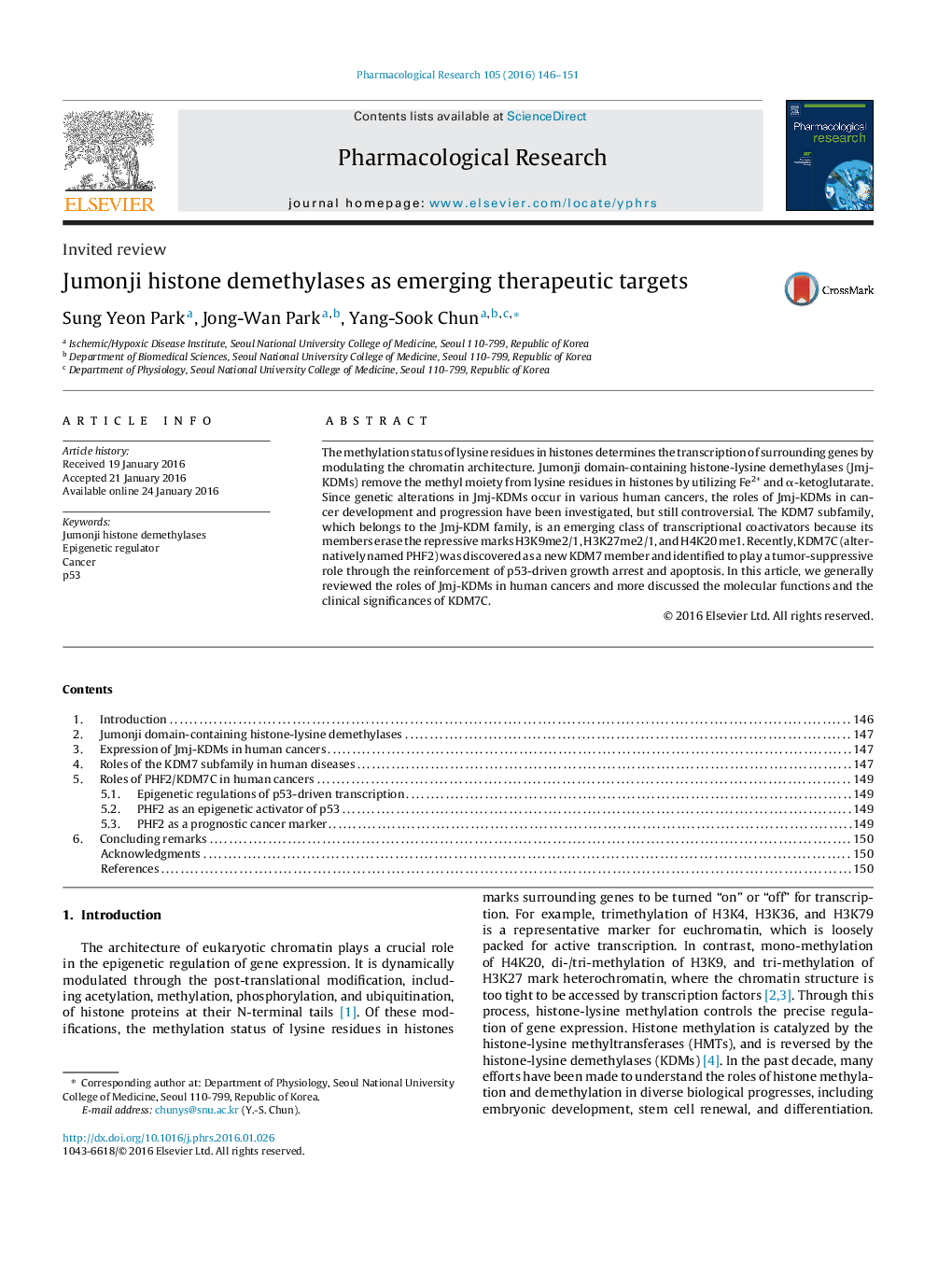| Article ID | Journal | Published Year | Pages | File Type |
|---|---|---|---|---|
| 2562057 | Pharmacological Research | 2016 | 6 Pages |
The methylation status of lysine residues in histones determines the transcription of surrounding genes by modulating the chromatin architecture. Jumonji domain-containing histone-lysine demethylases (Jmj-KDMs) remove the methyl moiety from lysine residues in histones by utilizing Fe2+ and α-ketoglutarate. Since genetic alterations in Jmj-KDMs occur in various human cancers, the roles of Jmj-KDMs in cancer development and progression have been investigated, but still controversial. The KDM7 subfamily, which belongs to the Jmj-KDM family, is an emerging class of transcriptional coactivators because its members erase the repressive marks H3K9me2/1, H3K27me2/1, and H4K20 me1. Recently, KDM7C (alternatively named PHF2) was discovered as a new KDM7 member and identified to play a tumor-suppressive role through the reinforcement of p53-driven growth arrest and apoptosis. In this article, we generally reviewed the roles of Jmj-KDMs in human cancers and more discussed the molecular functions and the clinical significances of KDM7C.
Graphical abstractFigure optionsDownload full-size imageDownload high-quality image (153 K)Download as PowerPoint slide
